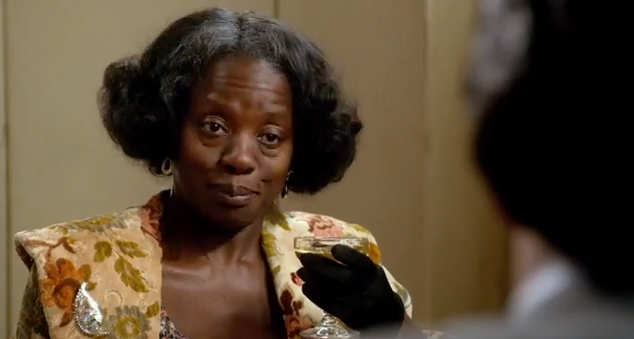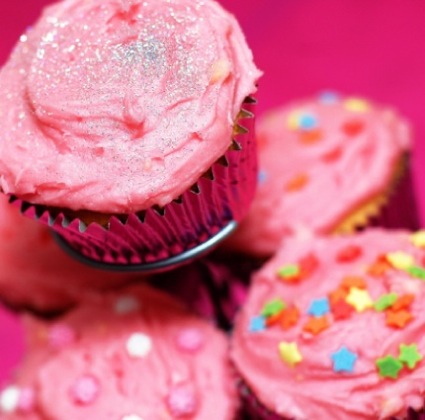Awards season is here, which means overrated films like Boyhood and Ida are starting to collect lauds. And even those of us in groups that give out very minor awards are starting to receive “for your consideration” screeners. I saw a fun trailer for Get On Up, the James Brown bio-pic, at the Roxbury International Film Festival in the summer and then didn’t hear much about it until last month when I received in the mail a heavy promotional packet from its distributor, with a large, glossy, brightly colored book of stills from the film filled with big-font blurbs from critics and, hilariously, no sign of a DVD–or info about accessing the film online–inside. I was trying to think what the studio’s motivation was, that someone in their marketing department thought I would flip through the film’s book of photos and think, “This looks fabulous,” and immediately vote for it as “Best Picture.” The studio, Universal, Fedexed the DVD to all of us later. Marketing for this film might have been better off with the strategy I had originally imagined.
I read film reviews, so I wasn’t expecting great art out of Get On Up, but I also wasn’t expecting a film that frequently had me asking myself why it had been made. I know all the good reasons for making a James Brown bio-pic. He was a musical genius (I don’t use that word lightly) whose innovations, for a less talented (or less business-savvy) artist, would have led to a nice little corner of the avant-garde. Instead, Brown and his band produced chart-making hits for 30 years (in itself an unprecedented accomplishment: his career lasted for 50 years) that lured people onto the dance floor who sat out every other song (and his work is sampled in many other artists’ hits as well). He also had a dramatic personal life; he was in prison both before he was famous and after the peak of his fame had passed, had many children by many different women (some of whom he married, some he did not) and, through the years, had a slew of domestic violence charges filed against him. They, of course, were not the reason he went to prison.

But why would anyone make a film of this terrible script (by British screenwriters Jez Butterworth and John-Henry Butterworth)? The previous film of director, Tate Taylor, The Help, gave him some experience with awful scripts about Black characters, but the main motivation for making the dull, sloppy, overlong Get On Up seems to be “We got the funding!” I’m not a fan of Taylor Hackford’s (award-winning) Ray, but at least that film, also about a musical icon and Black man who was, to put it mildly, not easy to get along with, had the bones of a better movie within it–a study of how a trusting and good-natured young person, after being repeatedly taken advantage of and discriminated against, becomes a suspicious asshole as he becomes older, even to those who mean him no harm. In Get On Up we see Brown, from the start in flashbacks from both 1988, when he was arrested after a high speed chase with the police, and in the 1960s when he toured Vietnam (the film jumps around in time for no discernible reason) as a crazed, dictatorial chatterbox. After the plane the band is in gets hit by mortar fire, Brown lectures a white army minder, “You want to go down in history as the man who killed the funk?”
The lead actor, Chadwick Boseman, doesn’t look like Brown (though as Brown ages, the incompetent makeup team try to make a resemblance out of rubber, leaving Boseman to try to act his way through the layers), but he does capture Brown’s distinctive voice and presence: smiling at first with joy and then a moment later letting paranoia and menace settle into his face. When Boseman, as Brown, dances on television during a performance before the Rolling Stones (in their first trip to America) I was reminded of an interview with Tina Turner in which she said that Mick Jagger didn’t dance when he sang with the Stones until after they’d toured with her. In archival footage, Jagger’s ’60s dance moves also seem to owe a lot to the early James Brown (who upstaged the Stones in their joint TV appearance), but Jagger is one of the film’s producers, so we don’t see the legacy of white performers “borrowing” from Black ones.

Like Ray, the best thing about Get On Up are the Black actresses in it. Even though many of them are just called on to flirt and smile, we still see more of of them than we do in the litany of movies that pretend Black women don’t exist. Octavia Spencer has a nice couple of moments as “Aunt Honey” the no-nonsense woman who reluctantly takes in young James after his father abandons him. She tells James, “Your mama’s a no-account fool. Your daddy too. But you ain’t gonna be.” But the standout is Viola Davis, as the mother who walks out on both father and son, and lets us see, in a late scene with Boseman, the humiliation she feels under her good-time persona. Earlier we witness a very simplified, sped-up pattern of abuse between Brown’s parents. His father (Lennie James) strikes Davis and then immediately demands sex, which she also seems eager for. Brown plays out the same scenario with his second wife (played by Jill Scott). This distortion of what happens in abusive relationships makes the violence we see seem like a fetish, an insult to all survivors of domestic abuse.
Like Ray’s Kerry Washington before her, Davis has found a role on television in a Shonda-Rhimes-produced series that gives her the chance to show off the full range of her talent, and maybe sometime in the future we’ll see a series that does the same for Aunjanue Ellis, who, in Get On Up, looks great, in ’60s outfits and hairstyles and gives the world’s most piercing side-eye as Vicki Anderson, a backup singer in Brown’s band who later marries his best friend and band mate–he shared lead vocals with Brown and co-wrote the song “Get Up (I Feel Like Being a) Sex Machine”)–Bobby Byrd (Nelsan Ellis). But Taura Cherne, Jacinte Blankenship, and Cariella Smith also leave indelible impressions during their brief time on camera. Whenever producers weakly say they couldn’t find good Black actresses for roles that usually end up going to white women, I can’t help thinking of all the talented Black women going to waste in films like this one.
[youtube_sc url=”https://www.youtube.com/watch?v=guOS6ev6hQ0″]
___________________________________
Ren Jender is a queer writer-performer/producer putting a film together. Her writing. besides appearing every week on Bitch Flicks, has also been published in The Toast, RH Reality Check, xoJane and the Feminist Wire. You can follow her on Twitter @renjender



